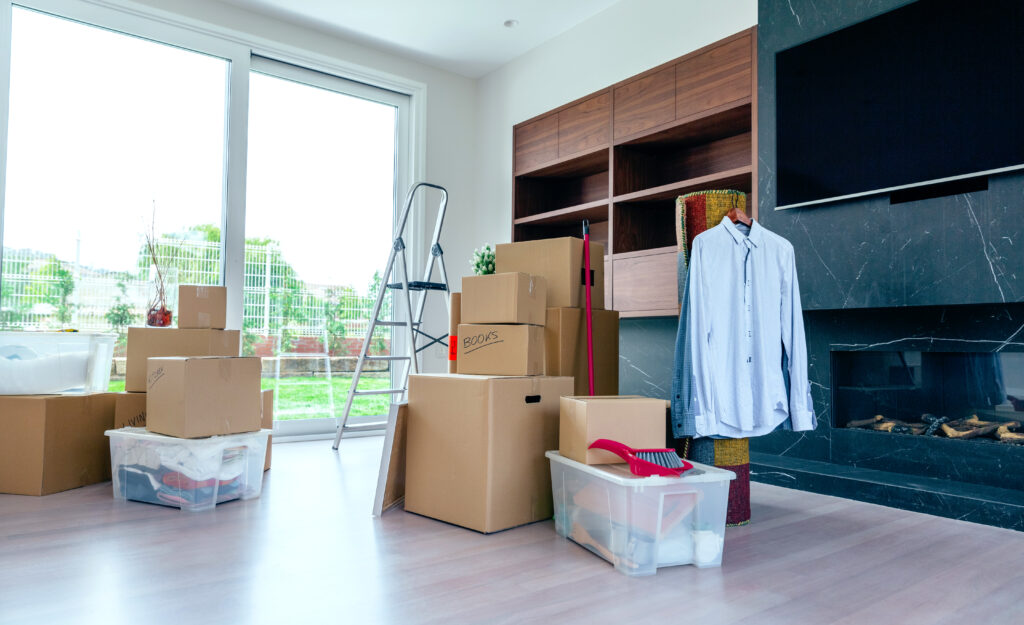Moving from one room to another within the same house or apartment might seem like a simpler task compared to a full-scale relocation. However, room-to-room moving presents its own set of challenges, especially when it comes to maximizing space and efficiency.
Whether you’re rearranging furniture, renovating, or simply organizing, strategic planning can make the process smoother and more effective. One option is to hire David’s Moving to help with the heavy lifting. In this guide, we’ll explore some key strategies to help you optimize space and efficiency during room-to-room moving.
Room to Room Moving Tips
- Plan Ahead: Before you start moving anything, take some time to plan out the layout of each room. Consider the space’s function and how you want it to flow. Sketching out a floor plan can be helpful, allowing you to visualize where furniture and other items will go. Planning ahead can prevent unnecessary backtracking and ensure that everything fits seamlessly into place.
- Declutter: Room-to-room moving presents the perfect opportunity to declutter and streamline your belongings. Take stock of what you have and decide what you truly need and use. Donate or sell items that no longer serve a purpose, and discard anything that is broken or beyond repair. By reducing the amount of clutter, you’ll free up space and make the moving process more efficient.
- Use Multi-Functional Furniture: When space is limited, multi-functional furniture can be a game-changer. Look for pieces that serve multiple purposes, such as a sofa bed or a coffee table with built-in storage. These versatile items can help maximize space while still providing functionality. Additionally, furniture with a small footprint, such as nesting tables or wall-mounted shelves, should be considered to make the most of the limited floor space.
- Utilize Vertical Space: Don’t forget to take advantage of vertical space when arranging your rooms. Install shelves or wall-mounted storage units to keep items off the floor and free up valuable square footage. Tall bookcases and cabinets can also provide ample storage without taking up a lot of floor space. By thinking vertically, you can make the most of every inch of your room.
- Prioritize Accessibility: When arranging furniture and belongings, prioritize accessibility to ensure that essential items are easy to reach. Place frequently used items within arm’s reach while storing less-used items in higher or less accessible areas. This will help streamline your daily routines and make navigating the room more convenient.
- Create Clear Pathways: Maintain clear pathways throughout each room to facilitate easy movement. Avoid blocking doorways or walkways with bulky furniture or clutter. Arrange furniture to allow for smooth traffic flow and minimize obstacles. Clear pathways not only enhance the room’s functionality but also contribute to a more spacious and open feel.
- Maximize Natural Light: Natural light can make a room feel larger and more inviting. Arrange furniture to maximize natural light exposure, keeping windows unobstructed and using light-colored curtains or blinds that allow sunlight to filter through. If privacy is a concern, consider frosted or sheer window treatments that provide privacy without sacrificing natural light.
Additionally, strategically placed mirrors can help reflect light and create the illusion of a larger space.
- Invest in Space-Saving Storage Solutions: Effective storage is key to maximizing space and keeping rooms organized. Invest in space-saving storage solutions such as under-bed storage bins, hanging organizers, and modular storage systems. These solutions can help maximize storage capacity without taking up valuable floor space. Additionally, label storage containers and shelves to make it easy to locate items when needed.
- Consider Traffic Patterns: When arranging furniture, consider the natural traffic patterns within the room. Arrange furniture in a way that allows for easy movement from one area to another without obstructing pathways. Pay attention to how people typically move through the room and adjust furniture placement accordingly. By optimizing traffic patterns, you can improve the functionality and flow of the space.
- Evaluate and Adjust: Once you’ve arranged your rooms, take some time to evaluate the layout and functionality. Pay attention to how well the space works for your needs and make adjustments as necessary. Don’t be afraid to experiment with different furniture arrangements until you find what works best for you. Room-to-room moving is a dynamic process, and being flexible and willing to make changes will help you create spaces that are both efficient and comfortable.
Getting Help With Your Room to Room Moving Project
In conclusion, room-to-room moving requires careful planning and strategic thinking to maximize space and efficiency. By following these strategies, you can streamline the moving process and create rooms that are functional, organized, and aesthetically pleasing.
Whether you’re rearranging furniture, renovating, or simply reorganizing, these tips will help you make the most of your space and create rooms that work for you. When you need help with your room-to-room project in Kansas City and surrounding areas, give David’s Moving a call at 816-542-6195. We will get you a free estimate!





